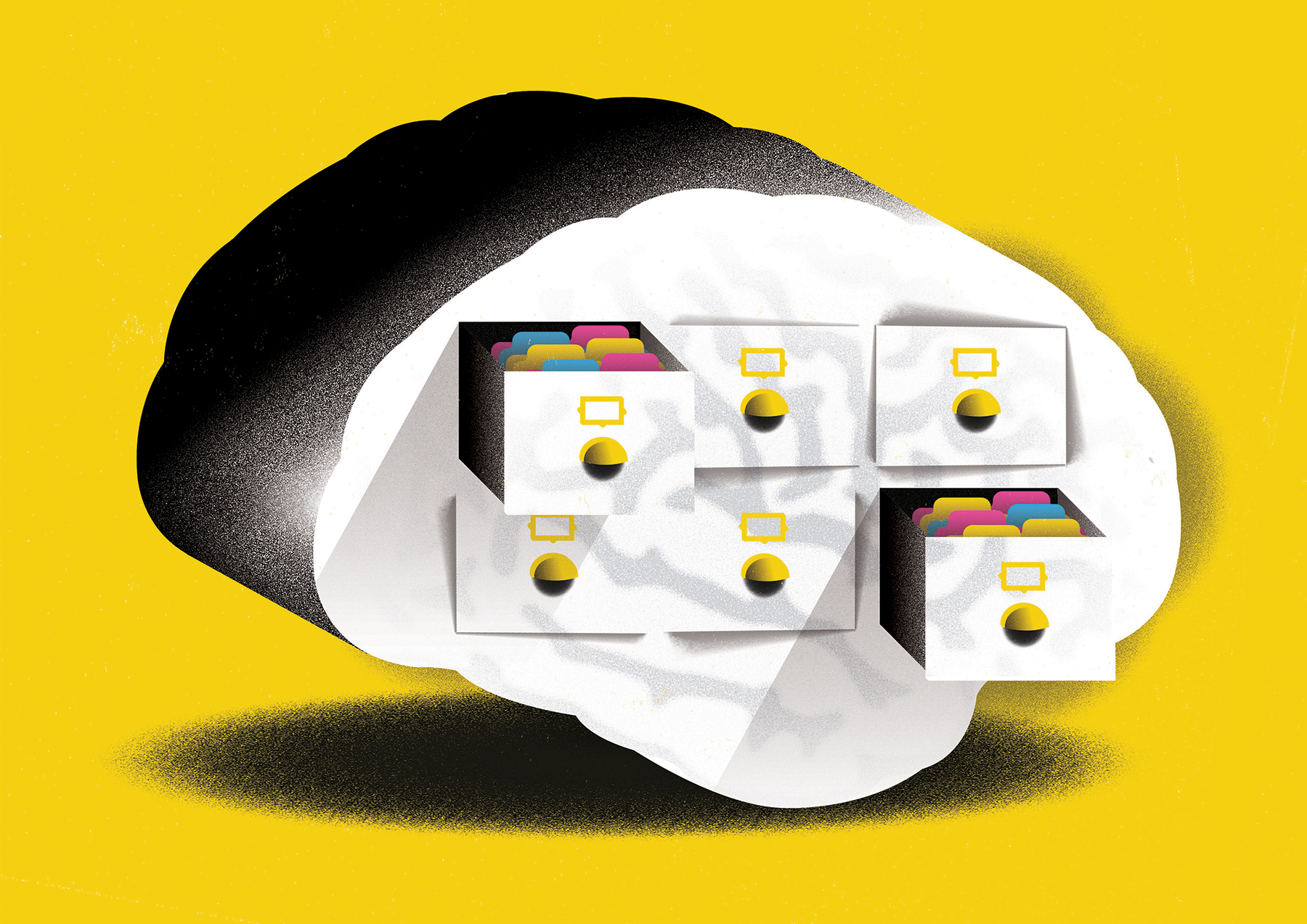Discoveries
Filed to Memory
Jul 26, 2018 Cedars-Sinai Staff
New Study Aims to Reveal Secrets of Brain Circuitry and Decision-Making

Illustration: Neil Webb
To unlock secrets of one of the mind’s most mysterious and important functions—how memories are forged and recalled— Cedars-Sinai investigators are sketching a dynamic picture of the brain. It will, for the first time, show how individual cells and complex neural circuits interact in both time and space.
“The long-term goal is to enable development of new treatments that combat the devastating effects of memory disorders like Alzheimer’s disease,” says lead investigator Ueli Rutishauser, PhD, director of Human Neurophysiology Research.
The large-scale study led by Cedars-Sinai aims to elucidate each step in the brain’s process of forming and retrieving short-term and long-term memories, and how those recollections influence day-to-day decision-making.
To gather the data, scientists will record activity of individual neurons in different parts of the brain using small electrodes inserted into brain implants in patients undergoing surgical treatment for drug-resistant epilepsy. Investigators will use this data to develop a detailed understanding of the neural networks behind declarative memory—the conscious recollection of learned information.
“This work relies on a very rare patient population,” notes coinvestigator Adam N. Mamelak, MD, director of the Functional Neurosurgery Program. “To advance the field, we need to establish multicenter collaborations to pool data and obtain more robust information more quickly.”
Boston Children’s Hospital, Harvard Medical School, Johns Hopkins, and the University Health Network in Toronto have joined Cedars-Sinai in this memorable effort. The work is supported by the National Institutes of Health’s Brain Initiative, which aims to revolutionize understanding of the human brain.


